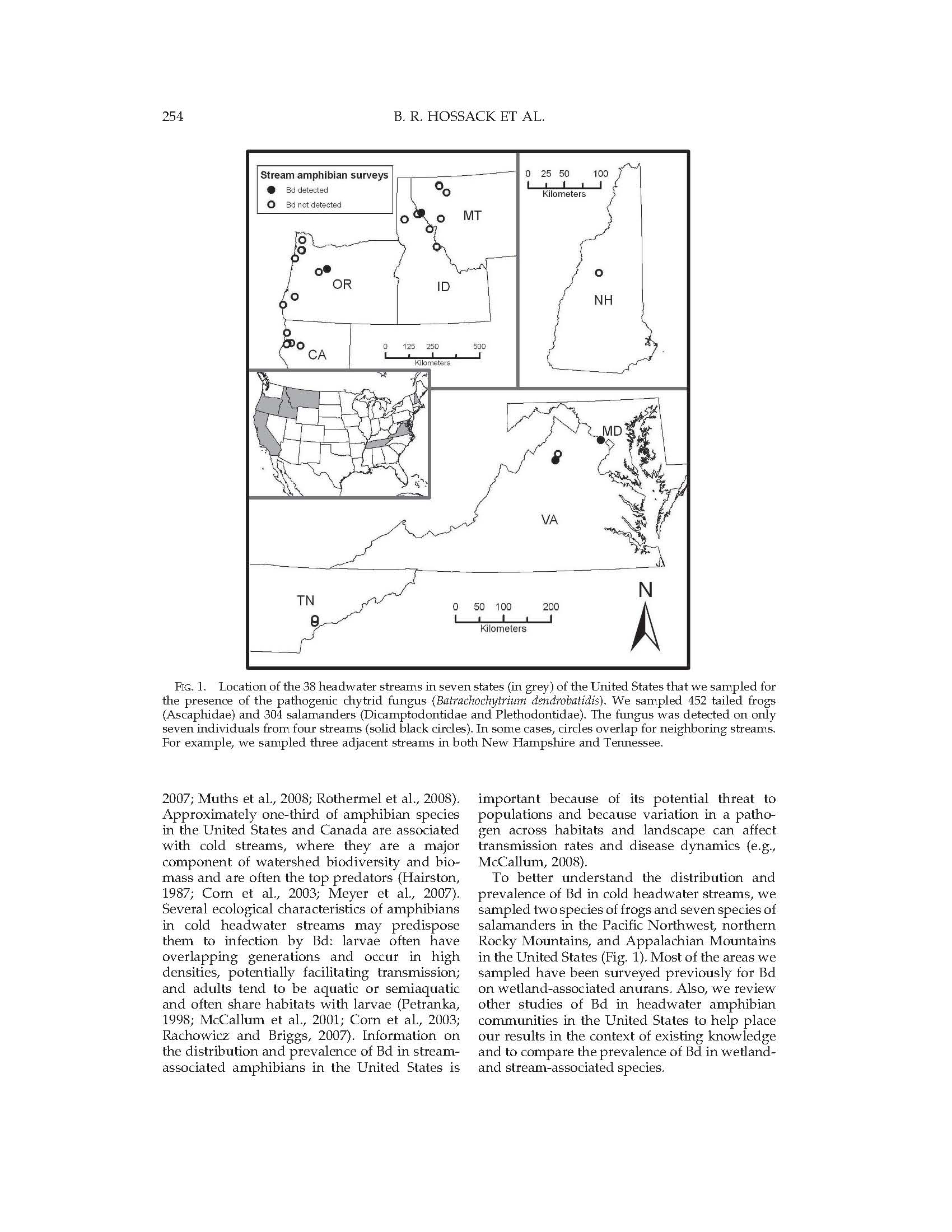Low prevalence of chytrid fungus (Batrachochytrium dendrobatidis) in U. S. headwater amphibians
Abstract/Summary
Many declines of amphibian populations have been associated with chytridiomycosis, a disease caused by the aquatic fungus Batrachochytrium dendrobatidis (Bd). Despite the relatively high prevalence of chytridiomycosis in stream amphibians globally, most surveys in North America have focused primarily on wetland-associated species, which are frequently infected. To better understand the distribution and prevalence of Bd in headwater amphibian communities, we sampled 452 tailed frogs (Ascaphus truei and Ascaphus montanus) and 304 stream salamanders (seven species in the Dicamptodontidae and Plethodontidae) for Bd in 38, first- to third-order streams in five montane areas across the United States. We tested for presence of Bd by using PCR on skin swabs from salamanders and metamorphosed tailed frogs or the oral disc of frog larvae. We detected Bd on only seven individuals (0.93%) in four streams. Based on our study and results from five other studies that have sampled headwater- or seep-associated amphibians in the United States, Bd has been detected on only 3% of 1,322 individuals from 21 species. These results differ strongly from surveys in Central America and Australia, where Bd is more prevalent on stream-breeding species, as well as results from wetland-associated anurans in the same regions of the United States that we sampled. Differences in the prevalence of Bd between stream- and wetland-associated amphibians in the United States may be related to species-specific variation in susceptibility to chytridiomycosis or habitat differences.
Publication details
| Published Date: | 2010-06-01 |
| Outlet/Publisher: | Journal of Herpetology 52: in press |
| Media Format: |
ARMI Organizational Units:
Pacific Northwest - BiologySouthwest, Northern California - Biology
Rocky Mountains, Northern - Biology
Northeast - Biology
Southeast - Biology
Topics:
DiseaseStressors
Water
Place Names:
CaliforniaIdaho
Maryland
Montana
North Carolina
Oregon
Tennessee
Western US
Keywords:
amphibiansARMI
Bd
chytrid fungus
climate
disease
ecology
pathogen
stressors

